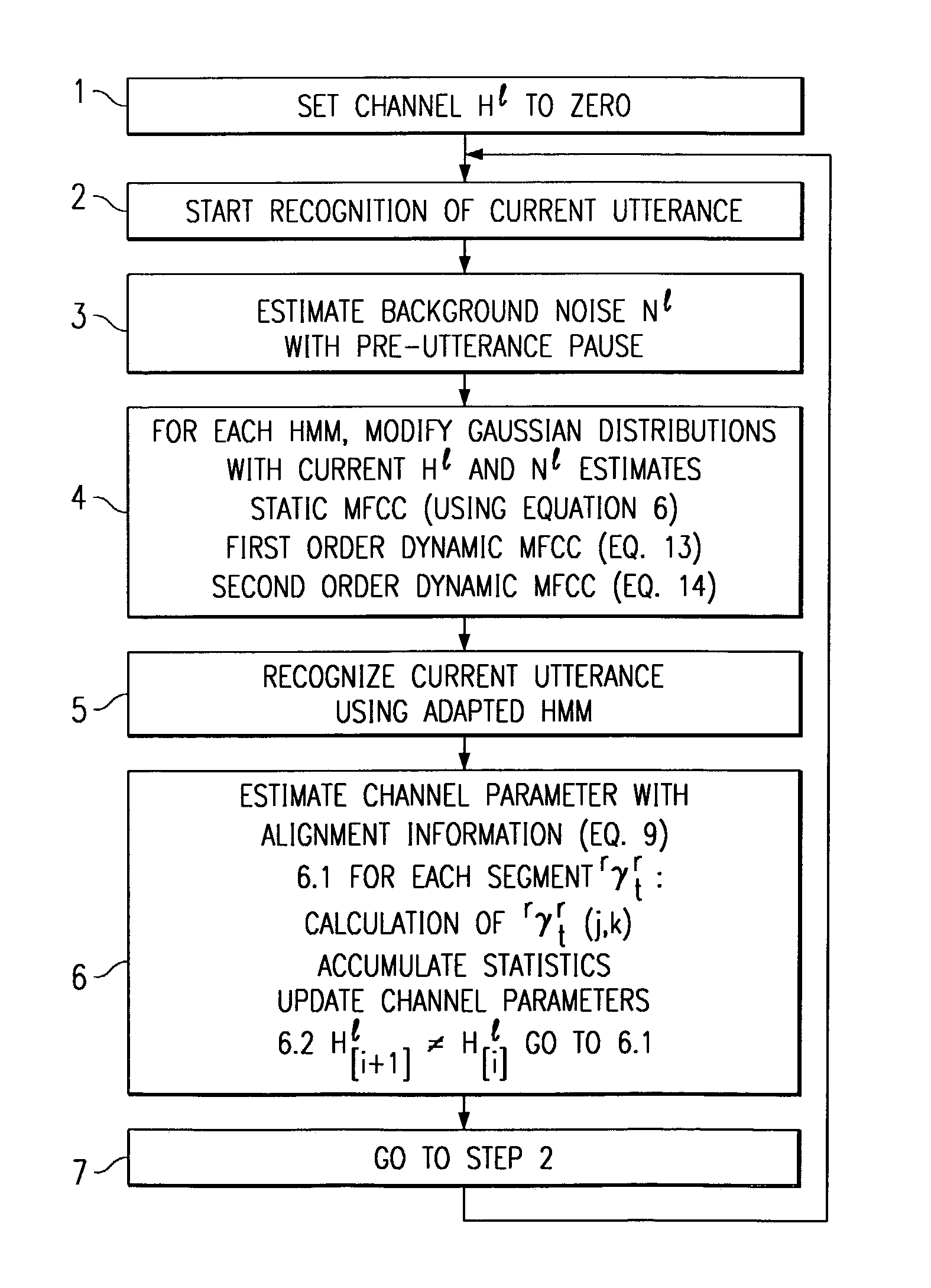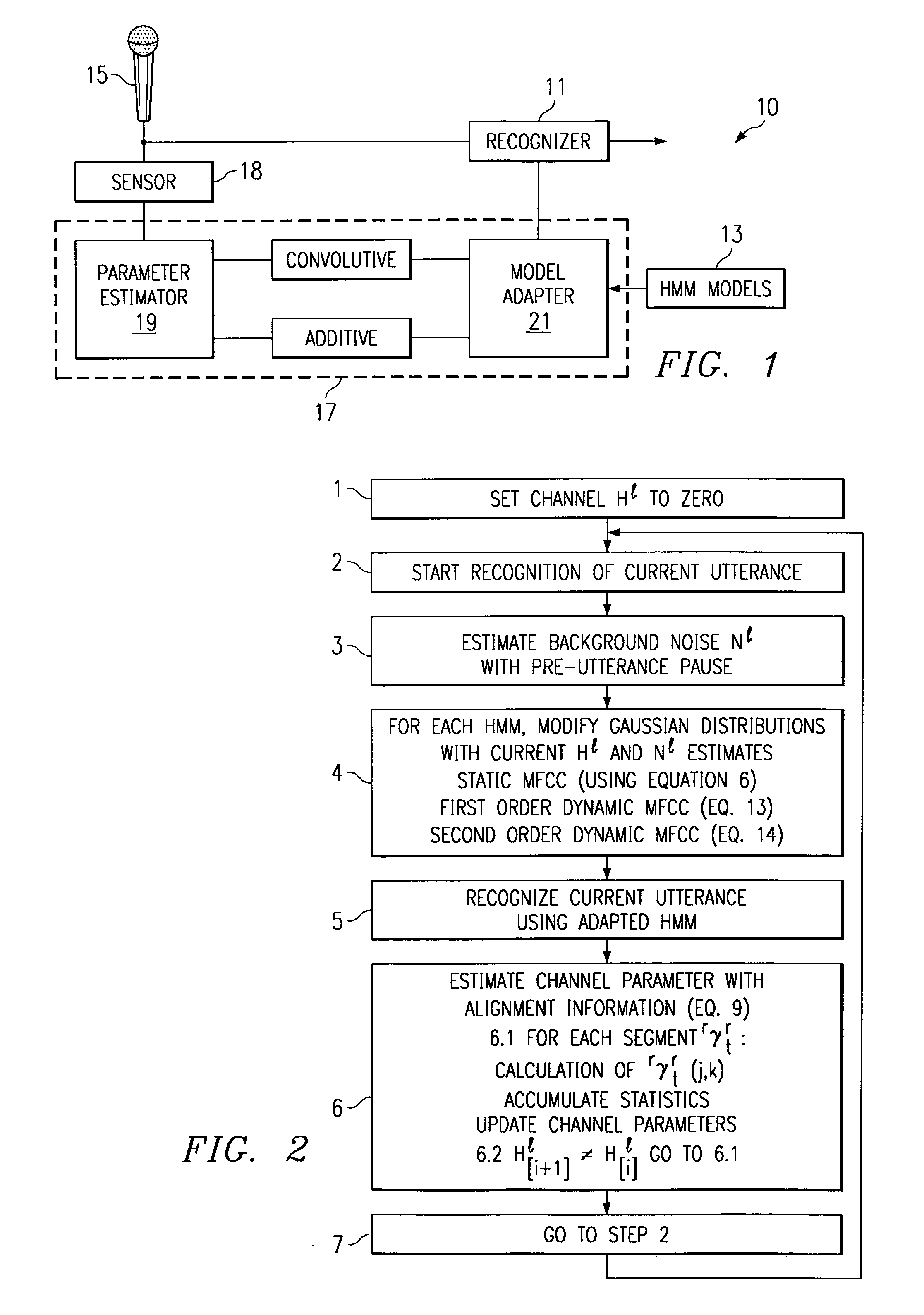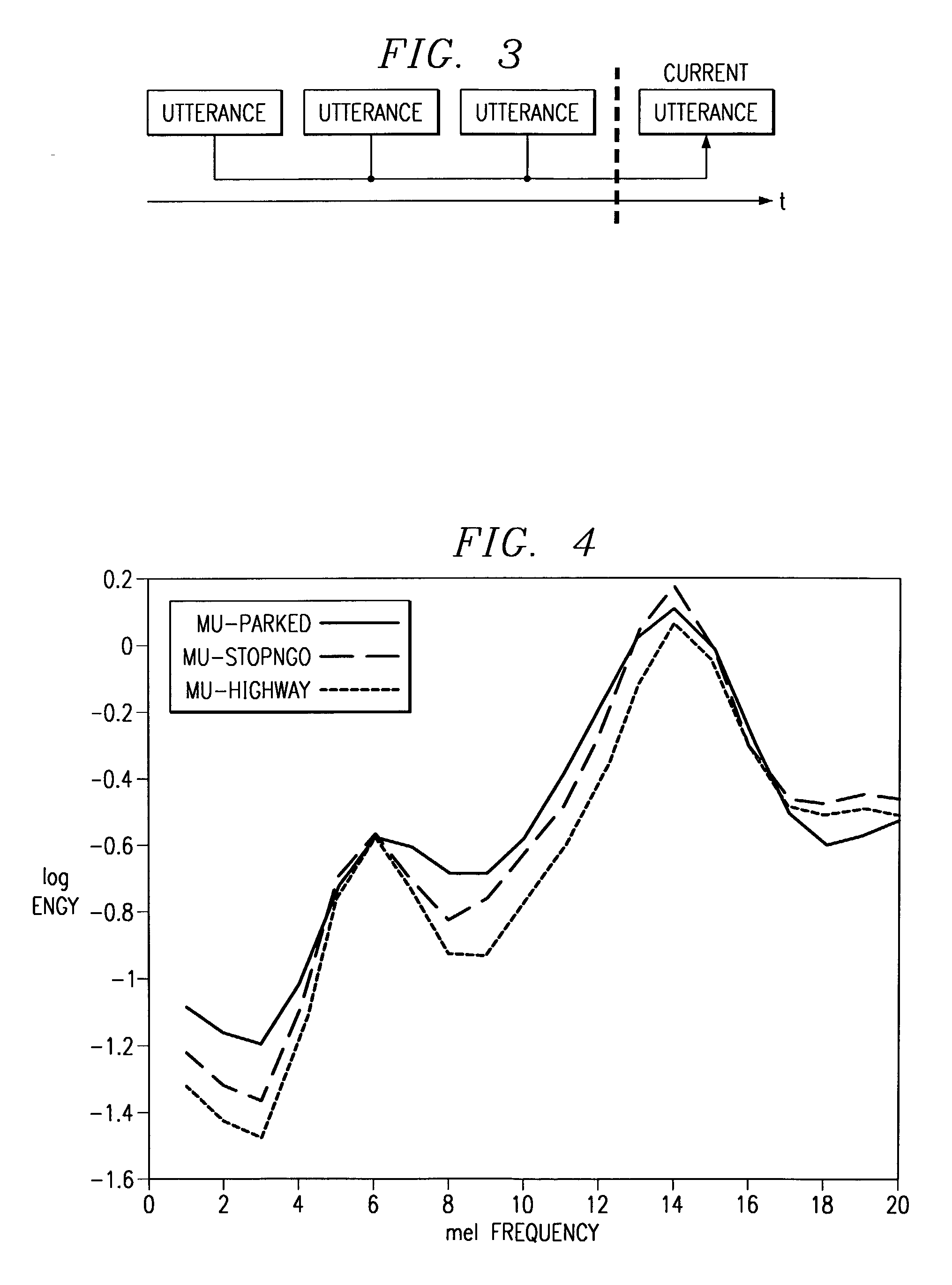Method of speech recognition resistant to convolutive distortion and additive distortion
a speech recognition and additive distortion technology, applied in the field of speech recognition, can solve the problems of inability to train speaker-independent hmms and speech recognition trained with office environment speech data, and may fail to operate in a mobile environment, and it is not easy to determine if the collected data can cover all future noisy environments
- Summary
- Abstract
- Description
- Claims
- Application Information
AI Technical Summary
Benefits of technology
Problems solved by technology
Method used
Image
Examples
Embodiment Construction
[0019]Before describing the joint compensation for channel and noise the influence of channel and noise is reviewed and explained. A speech signal x(n) can only be observed in a given acoustic environment. An acoustic environment can be modeled by a background noise bN(n) and a distortion channel h(n). For typical mobile speech recognition b′(n) consists of noise from office, vehicle engine and road noises, and h(n) consists of microphone type and relative position to the speaker. Let y(n) be the speech observed in the environment defined by bN(n) and h(n):
y(n)=(x(n)+bN(n))*h(n). (1)
[0020]In typical speech recognition applications, bN(n) cannot be measured directly. What is available is bN(n)*h(n), which can be measured during speech pauses. Let b(n)=bN(n)*h(n), our model of distorted speech becomes:
y(n)=x(n)*h(n)+b(n). (2)
[0021]Or, applying the Discrete Fourier Transform (DFT) to both sides of equation 2:
Y(k)=X(k)H(k)+B(k) (3)
[0022]Representing the above quantities in logarithmi...
PUM
 Login to View More
Login to View More Abstract
Description
Claims
Application Information
 Login to View More
Login to View More - R&D
- Intellectual Property
- Life Sciences
- Materials
- Tech Scout
- Unparalleled Data Quality
- Higher Quality Content
- 60% Fewer Hallucinations
Browse by: Latest US Patents, China's latest patents, Technical Efficacy Thesaurus, Application Domain, Technology Topic, Popular Technical Reports.
© 2025 PatSnap. All rights reserved.Legal|Privacy policy|Modern Slavery Act Transparency Statement|Sitemap|About US| Contact US: help@patsnap.com



